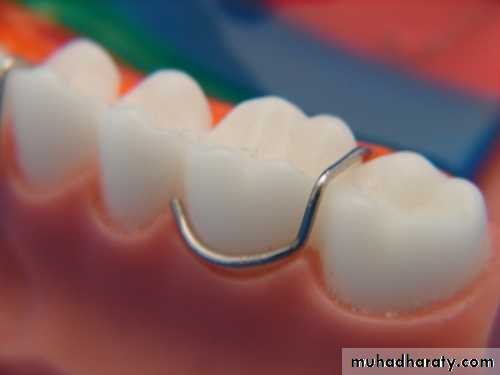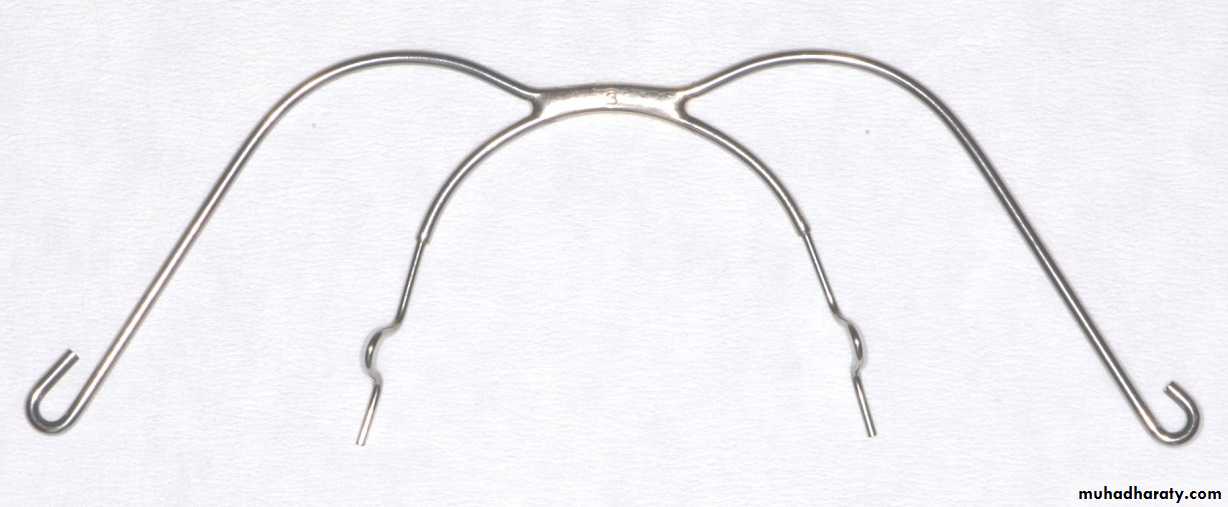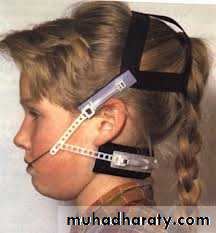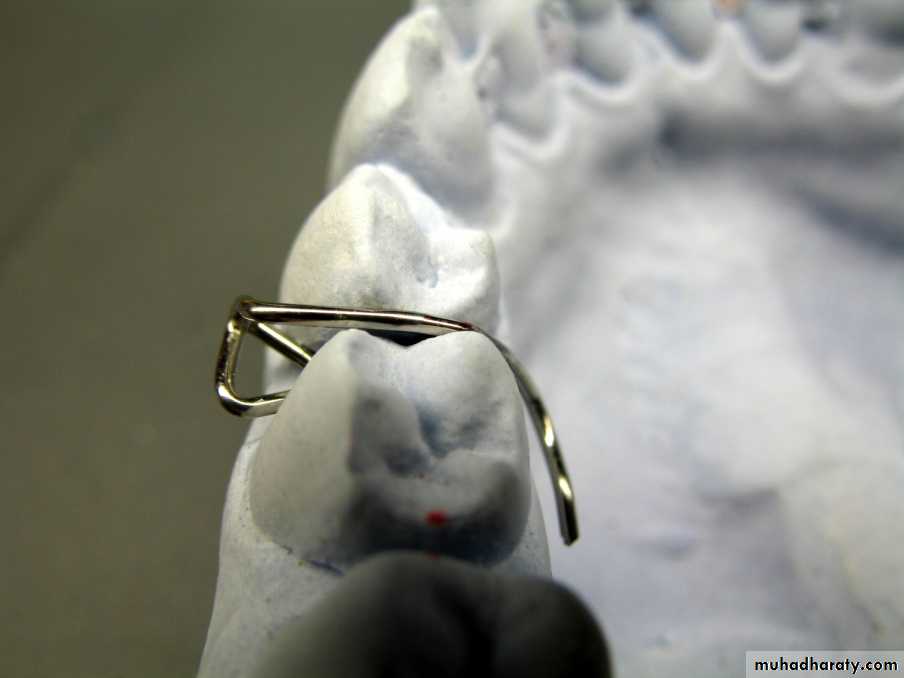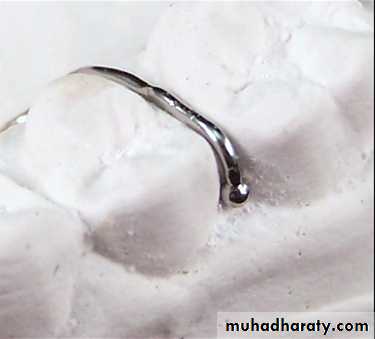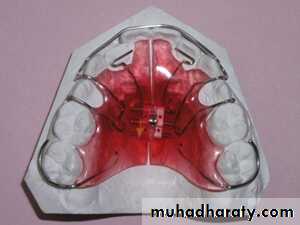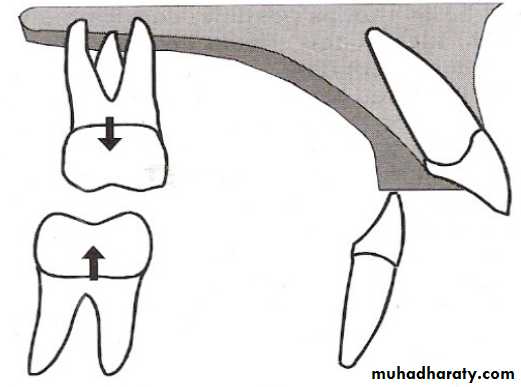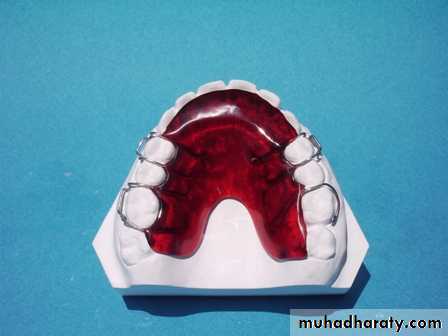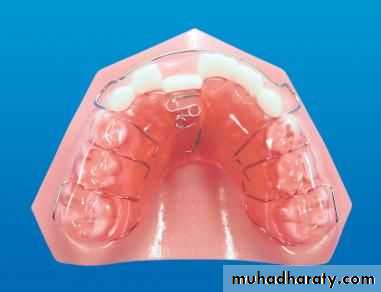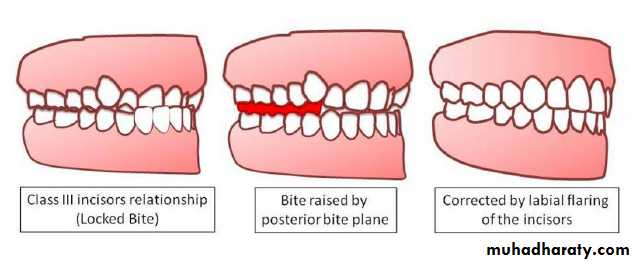Components of Removable Appliances
Retentive componentThey are the component that help in keeping the appliance in place and resist displacement . Adequate retention of a removable appliance is achieved by incorporating certain wire component that engage undercuts on the teeth . These wire components that aid in retention of a removable appliance are called clasp.
Mode of action of clasp
clasps act by engaging certain constricted areas of the teeth that are called undercuts. When clasps are fabricated the wire is made to engage these undercuts so that there displacement is prevented .USES of clasps:
• To secure the appliance in position• To prevent rolling of appliances
• To resist forces of displacement
• To provide retention & anchorage
• For engaging elastics
Requirement of ideal clasp
1. It should offer adequate retention . 2. It should permit usage in both fully erupted as well as partially erupted teeth . 3. They should not themselves apply any active force that would bring about undesired tooth movement of the anchorage teeth . 4. It should be easy to fabricate . 5. It should not impinge on the soft tissues . 6. It should not interfere with normal occlusion .Circumferential clasp
Circumferential clasp It is also known as three-quarter clasp or `C’ clasp . They are simple clasp that are designed to engage the bucco-cervical undercut. This clasp cannot be used in partially erupted teeth where the cervical undercut is not avilable for clasp fabrication .
Adaptation
A wire is engaged from one proximal undercut along the cervical margin then carried over the occlusal embrasure to end as a single retentive arm on the lingual aspect that gets embedded in the acrylic base plate .Advantages :- Simple design and fabrication Disadvantage :- It cannot be used in partially erupted teeth wherein cervical undercut is not avilable fo clasp fabrication
Jackson’s clasp
Jackson’s clasp• It is also called full clasp or ‘U’ clasp . The clasp engage the bucco- cervical undercut and also the mesial as well as distal proximal undrecuts.
• Adaptation Wire is adapted along the buccocervical margin and both the proximal undercuts ,and carried over both the occlusal embrasures to end as retentive arms on both side of the molar
• Advantages : simple to construct and offers adequate retention .
• Disadvantage : it offers inadequate retention in partially erupted tooth
Adams clasp
Adams clasp • Adams clasp was first descried by professor phillip Adams . it is also known as liverpool clasp ,universal clasp and modified arrowhead clasp . The clasp is constructed using 0.7mm hard round stainles steel wire . Adams clasp is made up of three parts (a) two arrowheads (b)bridge (c)two retentive arms. The two arrow heads engage the mesial and the distal proximal undercuts . The arrow heads are connected to each other by a bridge that is at 45 degree to the long axis of the rootAdvantages of adams clasp
• It is rigid and offers excellent retention• It can be fibricated on decidious as well as permanent teeth.
• They can be used in partially or fully erupted teeth.
• It can be used on molars ,premolars and on incisors .
• It is small and occupies minimum space .
• The clasp can be modified in a number of ways .
Modifications in adams clasp
a) Adams with single arrowhead : This type are indicated in partially erupted tooth ,which usually is last erupted molar . The single arrow head is made to engage the mesio-proximal undercut of the last erupted molar . The bridge is modified to encircle the tooth distally and ends on the palatal aspect as a retentive arms .b)Adams with J hook :
J hook can be soldered on the bridge of the adams clasp . These hooks are useful in engaging elastics .c) Adams with incorporated helix :
A helix can be incorporated into a bridge of the adams clasp . It also help in engaging elastics .d) Adams with soldered buccal tube :For extra oral anchorage using face bow and headgears , a buccal tube can be soldered on the bridge of adams clasp.
e)Adams with distal extension : The adams can be modified so that the distal arrow head has a small extension incorporated distally .They can be used in engaging elastic .
f) Adams on incisor and premolars : Adams clasp can be fabricated on the incisor and premolar areas when the retention in these area is required .
Southend clasp
Southend clasp is used when retention in the anterior region is required .The wire is adapted along the cervical margin of both the central incisors . The distal ends are carried over the occlusal embrasures to end as retentive arms on the palatal side .Traingular clasp
Traingular claspThey are small traingular shaped clasp that are used between two adjacent posterior teeth . Thus they engage the proximal undercuts of two adjacent teeth . These clasp are indicated when additional retention is required .
Ball end Clasp
Ballend Clasp• Wire having a knob or ball like structure on one end
• utilizes interdental undercuts
• Indicated when additional retention required
Baseplate
BASE PLATE: Constitutes the body of the removable appliance. ProvidesA)Foundation which supports other components.
B) Contributes to anchorage.
C) May be built into a bite plane to disengage occlusion or reduce overbite.
DESIGN AND CONSTRUCTION
The baseplate needs to be thick enough. Ideally, this should be about as thick as a sheet of modelling wax. Should cover most of hard palate, finishing just distal to the first molars.The baseplate should fit closely around the necks of teeth that are not being moved– otherwise food packing and gingival hyperplasia may occur. Baseplates are generally manufactured from cold-cured acrylic.
Acrylic of the base plate may be thickened anteriorly or posteriorly to form the bite plane.
A- ANTERIOR BITE PLANE: Mainly used for reduction of over bite.
B- POSTERIOR BITE PLANE: it will assist in the correction of buccal or an anterior cross bite. Should be thinner posteriorly than anteriorly. Should contact the opposing teeth on both sides of the mouth.

